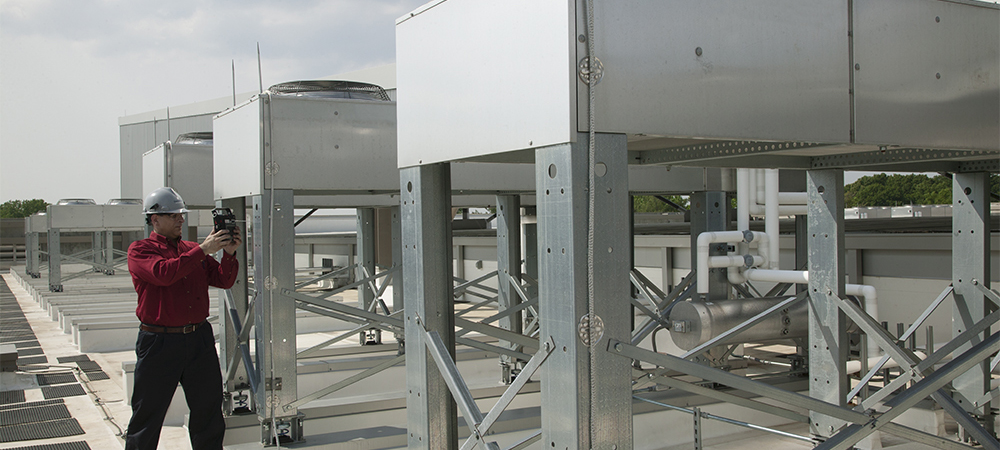Warmer weather in the southern hemisphere has just started, but already heatwaves have washed over many parts of the region, with extreme weather warnings – for both abnormally high temperatures and fire risks – being issued in many countries including Argentina, Australia, Bolivia, Botswana, Brazil, Namibia, Peru and South Africa.
This follows the hottest northern hemisphere summer on record, and a forecast from the United States’ National Atmospheric and Oceanographic Administration of a more than 93% chance that this year will be the warmest since global record keeping began.
The data centre cooling experts at Vertiv, a global provider of critical digital infrastructure and continuity solutions, have issued updated guidance for managing the extreme heat.
Climate change has made the past eight years the hottest on record, but with an El Niño weather pattern compounding the issue this year, 2023 has brought with it record-breaking temperatures across the globe. The sizzling outdoor temperatures and their aftermath create significant challenges for data centre operators who already wage a daily battle with the heat produced within their facilities. However, there are steps organisations can take to mitigate the risks associated with extreme heat. These include:
- Clean or change air filters: For data centre operators, the recent fires in both Brazil and Australia should serve as a reminder to clean or change air filters in their data centre thermal management systems and HVAC systems. Those filters help to protect sensitive electronics from particulates in the air, including smoke from faraway wildfires.
- Accelerate planned maintenance and service: Extreme heat and poor air quality tax more than data centre infrastructure systems. Electricity providers often struggle to meet the surge in demand that comes with higher temperatures, and outages are common. It is therefore imperative to be proactive with maintenance of uninterruptible power supply (UPS) systems and cooling units. Cleaning condenser coils and maintaining refrigerant charge levels, for example, can help to prevent unexpected failures.
- Activate available efficiency tools: Many modern UPS systems are equipped with high-efficiency eco-modes that can reduce the amount of power the system draws from the grid. Heatwaves like those we’ve seen recently push the grid to its limits, meaning any reductions in demand can be the difference between uninterrupted service and a devastating outage.
- Leverage alternative energy sources: Not all data centres have access to viable alternative energy, but those that do should maximise their use of off-grid power sources. These could include on- or off-site solar arrays or other alternate sources, such as off-site wind farms and lithium-ion batteries, to enable peak shifting or shaving. The use of generators is discouraged during heat waves unless an outage occurs. Diesel generators produce more greenhouse gas and emissions associated with climate change than backup options that use alternative energy. In fact, organisations should postpone planned generator testing when temperatures are spiking.
“These heatwaves are becoming more common and more extreme, placing intense pressure on utility providers and data centre operators globally,” said John Niemann, Senior Vice President for the Global Thermal Management Business for Vertiv. “Organisations must match that intensity with their response, proactively preparing for the associated strain not just on their own power and cooling systems, but on the grid as well. Prioritising preventive maintenance service and collaborating with electricity providers to manage demand can help reduce the likelihood of any sort of heat-related equipment failure.”
“Again this year, many parts of the world are experiencing record-setting heat, and in our business we specifically see the impact on data centres. Prioritising thermal redundancy and partnering with a service provider with widespread local presence and first-class restoration capabilities can make the difference in data centre availability,” said Flora Cavinato, Global Service Portfolio Director. “Swift response times and proactive maintenance programmes can help organisations to sustain their business operations while effectively optimising their critical infrastructure.”
The recommendations issued supplement previous guidance from Vertiv, which included:
- Run as many cooling units as possible to reduce the load on each individual unit, and save energy through teamwork controls.
- Consider different types of cooling systems, including liquid cooling, closed-loop chilled water cooling, and evaporative free cooling systems, all of which are designed for high-temperature environments.
- Use predictive modelling for thermal impacts rather than historic data. As extreme heat events increase in frequency, historic metrics often fall short of capturing modern risks.


